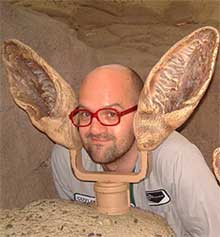 Ever since Max suggested i run interviews on the blog (and that's a looong time ago), i started thinking about whom i'd like to pester with naive questions. And whom i'd never dare to approach for an interview: those who are too famous, too brainy, too conceptual... too formidable for whatever reason one can imagine. Then one day you bump into one of them in a festival and he or she looks perfectly nice or open your email to find that they have sent you a kind message and you think "Well, i can do that, i can interview that guy." Vuk Cosic is certainly one of those "Formidables".
Ever since Max suggested i run interviews on the blog (and that's a looong time ago), i started thinking about whom i'd like to pester with naive questions. And whom i'd never dare to approach for an interview: those who are too famous, too brainy, too conceptual... too formidable for whatever reason one can imagine. Then one day you bump into one of them in a festival and he or she looks perfectly nice or open your email to find that they have sent you a kind message and you think "Well, i can do that, i can interview that guy." Vuk Cosic is certainly one of those "Formidables".
Speed bio:
Vuk Cosic was the Slovenian representative to the Venice Biennale in 2001, he's the co-founder of Ljudmila -- a digital media lab for artists in Slovenia and of the ASCII Art Ensemble and of course he's a pioneer in the field of net.art. He gained the notoriety for having copied the DocumentaX website in 1997. After the art event closed, the website was set to shut down. And it did closed, but not before Cosic copied it. And it's still up.
In History Of Art For Airports, Cosic reduced icons of the art into the kind of pictograms found on lavatory doors. Still, the images are instantly recognisable, such as the Venus de Milo, Cezanne’s Card Players and Warhol’s Campbell’s Soup.
Cosic is a Master of ASCII art. He uses ASCII as a filter through which other media are shown: music videos, films, pornos, video games:
ASCII history of art for the Blind, ASCII history of the moving images (includes some black and green clips from Deep Throat, Blow Up, Star Trek), ASCII music videos (features Baby Light My Fire, California Dream, Venus, etc.) ASCII architecture consisted in fully covering the St. Georges Hall, a neo-classical monument in Liverpool, with the projection of ascii rendering of the same surface that it's being projected on.
One of his most recent works is the File Extinguisher, an online service that allows you to delete your files with absolute certainty.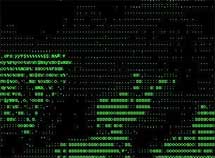
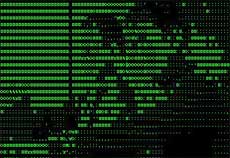
ASCII history of the moving images: Deep Throat + Star Trek screenshots
Time for the interview:
In 2001, the Venice Biennale hosted for the first time a display of net.art. I can't remember having seen any trace of net.art at the Venice 2005 edition. How do you explain it? Were you just lucky to show works at the time? What's going on today? Isn't net.art worth exhibiting anymore?
[Vuk Cosic]
Net.art is a bit like Eastern Europe. There was lots of expectations, some of them were met, but in general we stopped being terribly attractive and scary somewhere around the dotcom boom.
It would be interesting to see whether we're going to see net.art 2.0 now, something that would use long tail and APIs and user contents and perpetual beta and all that. Might make sense. (Btw are we to call Web 2.0 Dot com boom boom now?)



History of Art for Airports: St Sebastien - Venus - Warhol
I do have a problem with exhibitions of net.art. Let's be honest, i find them boring. I pay the entrance fee, see all these screens in a room, and each time i think "i could have seen it home, sitting on a sofa with a cup of herbal tea." Do you think the audience needs art galleries to recognize that net art is well, art and is thus worth their attention?
Obviously the problem is you, but let's try and structure this a bit. There's three players here: the artist, the gallery and the viewer. As we know very well there is no greater force in the universe then the comformism of the artists. This explains why video art looks like it does now: in the process of inventing video installations the guys have also erased most of their disruptive potential so now we've got these nice looking projections on curtains and multichannel views of empty seescapes in big museums. Exactly the same is happening with the domestication of the net.art rebels.
The second player - the gallery or the museum - has to maintain the prestige by showing whatever is the current practice. There was no way they would let us go. And they tought us the rules.
The viewer - poor creature - still didn't gain the faculties Beuys was promoting. It is prety much like the IT people saying "build it and they will come" -- democracy in art perception is not guaranteed just because we've declared it. The system is still unworkable and people prefer canned curatorial recommendations. This explains why people need mediators. My work is equally accessible to everybody with or without the gallerists help, but when Weibel or Kofi Anan or your blog say I'm cool then my work is worth the visit.
Ten years after having coined the term net.art, you had a retrospective at the respectable Institute of Contemporary Art in london....
I didn't coin that term. net.art is an expression that was coined by Pit Schultz sometime in 1995. Alexei Shulgin wrote that silly story about me for fun, and that e-mail is still the most frequently referenced work of net.art.
Ten years after the term net.art had been coined by Schultz, you had a retrospective at the respectable Institute of Contemporary Art in london. Do you feel like the pioneer has been promoted (if it can be regarded as a promotion) mainstream artist?
No, I haven't been made mainstream. Our whole group was moved to the general area of mainstream artists back in '97 and '98 but the reality is that we are irelevant mainstream artists. The glory of international art stars is not happening. Our group of first generation net.artists managed more or less to stay clear of those attempts but if you look at the last Documenta or such you can see web artists trying to go for the spotlights... Some day someone might hit the jackpot but it sure is sad to watch.
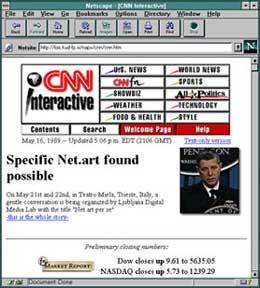
What about the Net.art per se manifesto that you discussed with other activists/artists in Trieste 10 years ago? What would it look like today?
I just read a great article by Caitlin Jones in the last issue of Believer magazine. Its main strength in my view is in the straight line she draws between Duchamp's work, video art and net.art. It was not only flattering for a history buff like myself but it was also a very very comforting confirmation that our attempt was worth it. I am fully aware we didn't change things much but it was the questions that we've asked that matter.
Each generation has to develop its own sense of defeat, I read somewhere.
If I were to try something simillar to that manifesto today I guess I'd go for a predictable mix of internet of things, intellectual property, emergent behaviour, energy and post 9/11. The questions would be about what kind of work might have artistic and social relevance in the world today. And what kind of ideas are most fun.
Where do you think is today's avant-garde?
In order to find an avant-garde you need to look for networks of like-minded people asking new questions and avoiding boundaries and defaults proposed by previous generations of avang-garde humans. So regardless of individual quality of some of amazing new media people of today I am having difficulties noticing a relevant dialogue that would be more electrifying than the sum of its participants. Or it's my hearing that has gone bad.
You play a lot with the media, question it, seek its vulnerabilities. You were even called an "Eastern European Hacker" when you "stole" Documenta X website. How much do you think you have in common with hackers? And what differentiates a net.artist from a hacker?
To stay brief: a hacker is a naive net.artist (in an art-historian sense). This doesn't mean that net.artist is a hacker only better. It only means that a net.artist is accepting and exploring the stickiness of the label of art.
At the same time some of the works done by hackers are much grander than most of net.art but the point of course is not in individual work.
Could you imagine working on some blog art project?
Sure, I'm running several blogs in my head all the time.
If I were to do this for real my first instincts would be to grossly distort the interface, write good shit but make it difficult for you to find it again, and in general mess with your intentions to interact.
You recently told me that the MEIAC, a museum in Badajoz (province of Estremadura, in Spain) had bought some 30 pieces of new media art including some "ancient" net.art piece of yours. Why do i hardly ever hear of such initiative? Why are contemporary art institutions like the Tate Modern in London still so shy when it come to commissioning or exhibiting new media art?
Maybe all of the net.art eco-system was simply too disperse to break into the real artworld. Or it's a question of time. There are few galleries selling this kind of work but the model is not good yet. Ben Weil once said that the one good museum collection of net.art will happen when some old net.artist will donate his personal belongings. I think that is realistic.
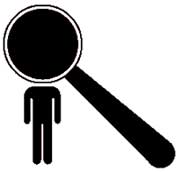
The Badajoz thing was not only great in itself but also as a good test-tube for larger museums. Antonio Pinto did a good curatorial job and the MEIAC museum has shown much more guts than all of the grand slam places put together. So we all win.
Ok, now comes the one million dollars question: how can a museum or gallery buy a piece that's available for anyone to see on the internet? How can its value be estimated?
It's more like a thousand euro question really and it works like with public performance or land art. The museum doesn't actually buy the thing itself but they get the documentation or I sign a piece of paper and that certifies that we have some sort of relationship... It is this relationship that counts.
When you see a Robert Smithson in a gallery or Christo it's exactly the same. You get to see their signature on some photo and you are supposed to know that they are hanging in that particular museum. The museum is percieved as cool, the relevant artist's work is being presented and your money was well spent.
Merci, merci Vuk!
Copied from We Make Money Not Art published
No comments:
Post a Comment